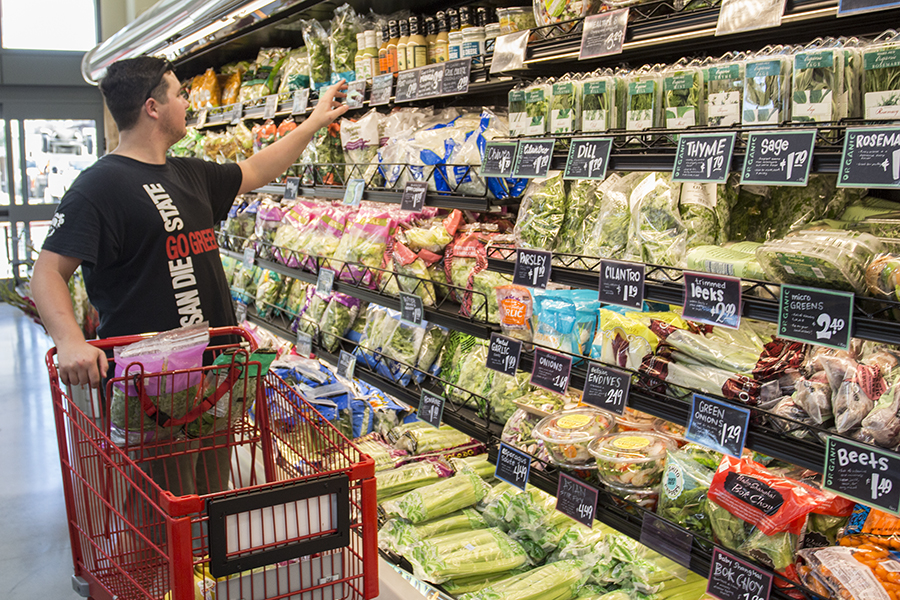In a nation where the cuisine is arguably dominated by fast-food chains, committing to a diet that is both nutritious and affordable might sound like a challenge.
The Well-Being and Health Promotion department at San Diego State has responded to this task with a number of initiatives including cooking classes, nutrition presentations and most recently, an interactive tour of the Trader Joe’s in the South Campus Plaza.
A Trader Joe’s tour is a 20- to 30-minute nutrition course wherein two peer health educators navigate through the aisles while sharing tips on how to eat healthier and shop smarter.
According to nutrition senior Alexandra Geer, the Well-Being and Health Promotion department has been hosting its weekly Trader Joe’s tours for a year now.
“(The purpose is to) give people an understanding of how to shop better and how grocery stores affect what you buy,” Geer said. “It’s a nutrition-based tour where we tell you how to look for healthy foods, how much protein you should be eating and how to read nutrition labels, almost like a nutrition one-on-one.”
Beginning in the front entrance where Halloween-themed foods currently reside, the tour commences with a brief recognition of the store’s promotions and highly advertised products. Tour attendees are then guided through the areas that house the main food groups: fruits and vegetables, grains, protein and dairy.
“There is a USDA standard called My Plate and it shows what type of food you should be eating,” Geer said. “Half of your plate should be fruits and vegetables, one fourth should be protein and one fourth is for grains.”
Peer health educators share the recommended daily serving amounts and nutrition values for each food category throughout the entirety of the tour. They enlist healthy and affordable options as well as tips on how to read nutrition labels. While in a refrigerated section, nutrition major Kalaya Paul stood in front of an array of milks, cheeses and yogurts while explaining healthy doses of each product.
“(Dairy) is your source of calcium,” Paul said. “You want to get at least three servings per day of dairy products. An example could be one cup of milk, yogurt or 1.5 ounces of cheese.”
Another thing to note about the tour guides is their inclusivity and awareness of guests with vegan, vegetarian or dairy-free diets.
“If you’re dairy-free or don’t consume dairy, other sources (of calcium) can be almond milk, alternative milks, broccoli, beans, almonds, soy milk or tofu,” Paul said. “You want to try to aim for the fat free or low fat options.”
Although the vegan and vegetarian section of Trader’s Joes isn’t an official stop on the tour, peer health educators like Geer and Paul like to take a few minutes to address alternative, plant-based products that are equally healthy. The tour concludes with a breakdown of how to shop for canned goods and a walk to the front of the store where attendees are thanked for their presence with a Well-Being and Health Promotion reusable shopping bag.
Nutrition services offered by the department include one-on-one nutrition counseling for students and C.H.E.F. (Cooking Healthy Eating Fresh) cooking classes with health educator Tyler Rolling.
Rolling advises students to sign up for the free hands-on cooking class by clicking on the “C.H.E.F. Cooking Classes” link on the department’s website. Those who participate in the class will cook a full meal and receive a free kitchen starter kit.







